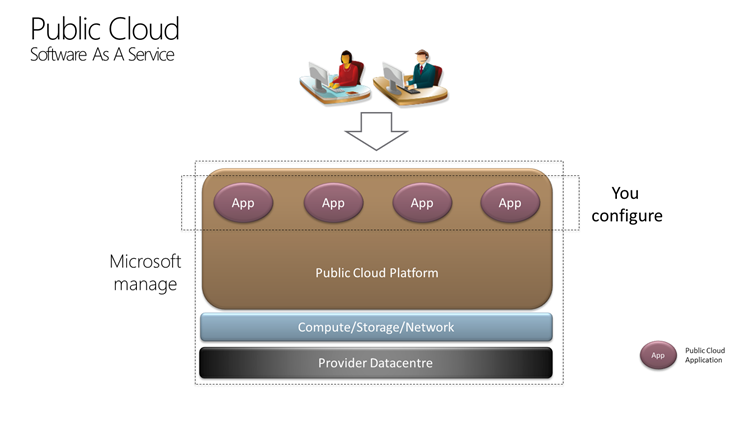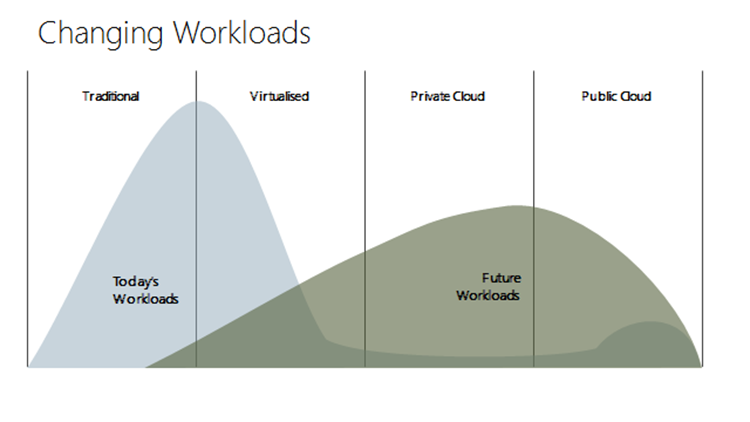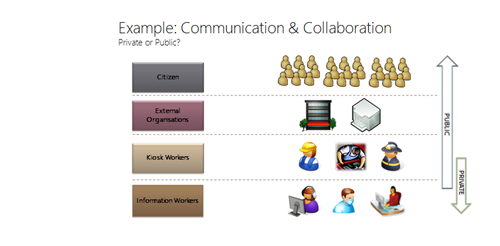Cloud computing - software as a service
In the previous post we looked at Infrastructure (IaaS) and Platform as a Service (PaaS), in this post we will look at Software As A Service or SaaS. The service provider manages everything up to and including the application itself. As a customer you get to configure the application for your use. A classic example of SaaS is email as a service, in this scenario the email service is managed and delivered by the service provider:
In the example of email as a service the provider manages storage groups, networking, routing etc etc. The customer configures the running applications for their environment e.g. adding users/mailboxes/distribution lists/resources such as meeting rooms etc.
From an architectural perspective the whole stack is managed by the service provider e.g. Microsoft (in the case of Windows InTune, Office 365 and Dynamics CRM Online). From a customers perspective there is no patching, faster deployments, self-service and delivery of the latest software to the end users.
In previous posts we have covered the move from a traditional computing environment through to virtualisation, to Private and Public Cloud Services. Across Public Sector today we see a big move around virtualisation and some use of Public Cloud Services (particularly around citizen facing applications, open data and transparency). Moving forwards however, we see a big shift in customers and partners building Private Clouds and Public Sector readily adopting and using Public Cloud Services.
Public Sector organisations typically have a range of user roles and needs. Traditionally an organisation that deals with sensitive data (say at IL3) would develop secure internal services and then push all of their users to that service, irrespective of their role in the organisation. The challenge is that this can be quite an expensive solution for many users. With the current financial pressures that organisations are under many look to Cloud as a way of reducing costs.
Organisations are profiling users, roles and applications to intelligently place them in the most appropriate service. For example a Housing Benefits officer in Local Government deals with sensitive data, may their services are best delivered from an on-premise Private Cloud. On the other hand a member of the catering staff does not have any access to sensitive information and could receive services from Public Cloud. Microsoft is uniquely positioned to support this hybrid model of deployment given our ability to deliver server products that enable customers to build their own services and we deliver public cloud services using the same underlying technology. This enables customers to seamlessly link on premise (and partner hosted) Private Clouds to our Public Cloud services.
In the next post we will take a look at how we can enable a hybrid cloud environment.
Posted by Nick.
You can follow is on Twitter here: @msukinhealth


